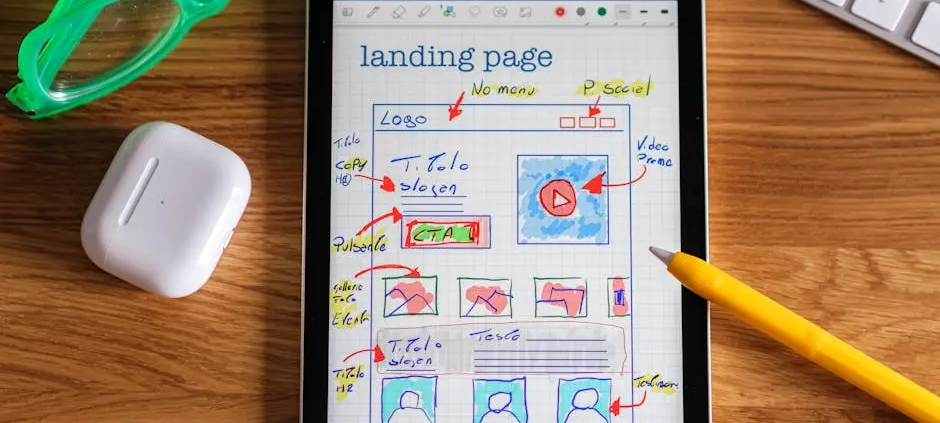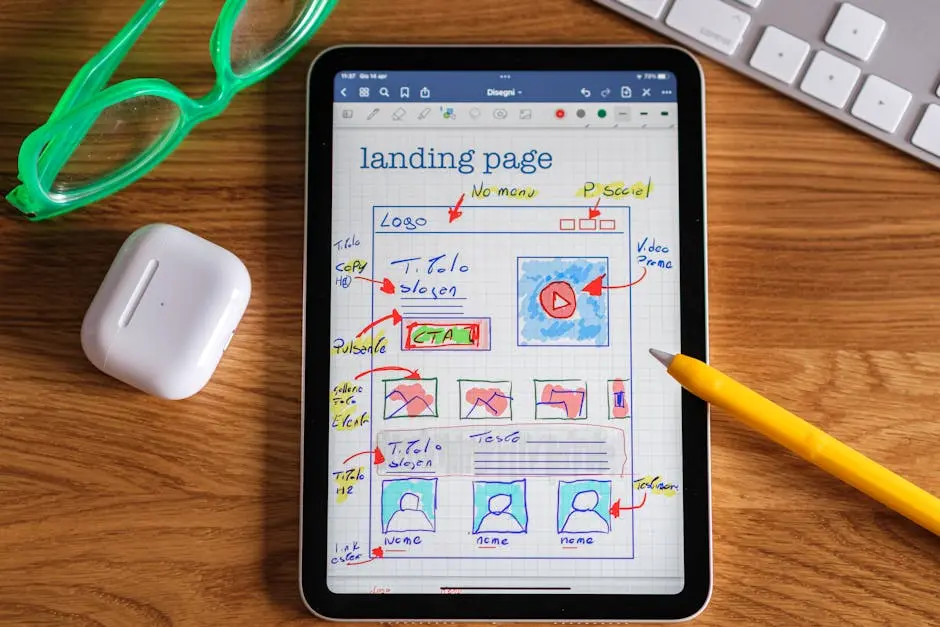Common App Design Mistakes and How to Avoid Them
Designing an app can be an exciting journey, but it’s easy to fall into some common pitfalls that could impact the user experience. Whether you’re a seasoned developer or just starting out, understanding these frequent mistakes and knowing how to sidestep them can set your app on the path to success.
Overloading the User Interface
A cluttered interface can overwhelm users, making it difficult for them to navigate your app. By prioritizing simplicity and intuitive design, you can create a seamless experience that keeps users engaged.
The key to effective app design is striking a balance between functionality and simplicity. Think about it: when your app bombards users with too many features or buttons on a single screen, it not only frustrates them but also discourages engagement. Instead, opt for a minimalist design approach. Make the core features immediately accessible and ensure that the additional options are easily discoverable without cluttering the interface. This way, users won’t be distracted or intimidated by too much information at once. One key strategy is to utilize whitespace effectively, which can help highlight essential features and improve usability.
Consider what users really need at each step of their journey in your app. By clearly defining user pathways and focusing on logical navigation, you can prevent overwhelm. Furthermore, testing your design with real users can uncover areas where the interface might feel too cramped or confusing. User testing is an invaluable step in refining your app’s design to ensure that it’s meeting user needs and expectations. Always remember: a better user interface enhances user satisfaction and fosters longer app usage.
Ignoring Platform Guidelines
Each platform has its own design conventions. Ignoring these can lead to a disjointed user experience. Aligning your app’s design with platform-specific guidelines helps ensure consistency and usability.
Failing to adhere to platform guidelines can significantly impact the functionality and appearance of your app. Whether it’s Apple’s Human Interface Guidelines or Google’s Material Design, these standards are curated to optimize both aesthetics and usability. For instances, following Android’s Material Design principles allows for a consistent look and feel across various Android devices, enhancing user comfort and reducing the learning curve. Ignoring these principles might result in an app that feels out of place or complicated, which can deter users from engaging with your product.
These guidelines aren’t just suggestions; they are crafted from extensive research and user feedback to improve the user experience. Respecting platform standards helps your app integrate seamlessly within the digital environment of that ecosystem, making it intuitive and user-friendly. It also aids in faster design processes since the groundwork is already laid. In turn, users will likely rate your app higher for its professionalism and ease of use, solidifying trust and ultimately retention.
Neglecting User Feedback
Ignoring input from your users can be detrimental. Regularly soliciting and implementing feedback is key to refining your app and addressing any pain points users might encounter.
User feedback is a treasure trove of insights waiting to be explored. Feedback from real users can help identify bugs, needed features, and various usability issues that developers may overlook. An app that listens to its users and adapts according to their needs stands a better chance at longevity and success. Engaging your user base by collecting their feedback through surveys, reviews, and in-app feedback forms not only makes them feel valued but also provides you with actionable data to drive improvements.
Furthermore, incorporating a feedback loop early in development can help consistently test new features and identify any friction points before they grow into larger issues. A prominent example is implementing monthly updates that address user concerns, showing your commitment to delivering a high-quality user experience. Remember, maintaining an active dialogue with users promotes loyalty and satisfaction, two key components for app success.
Poor Accessibility Considerations
Accessibility is crucial to enhancing the reach of your app. Implementing features like voice commands, text-to-speech, and customizable text sizes creates a more inclusive experience for users of all abilities.
Creating an accessible app isn’t just a moral obligation, it’s a legal one as well, depending on your target market. Accessibility features such as screen readers, contrasting color schemes, and easily adjustable font sizes ensure that your app can be used by individuals with disabilities. For instance, Apple’s guidelines heavily emphasize accessibility to accommodate a diverse user base, which in turn expands your app’s reach and usability.
Integrating accessibility considerations from the start also reduces costs associated with retrofitting these features later. Moreover, accessible design often proves beneficial to all users, not just those with disabilities, by simplifying navigation and enhancing overall usability. Make sure your app’s design passes accessibility checks, often provided by platforms themselves, to ensure all users have a positive experience regardless of their physical capabilities.
Overcomplicating Navigation
Complex navigation paths can frustrate users, leading to higher dropout rates. Designing clear and intuitive navigation not only improves the user experience but also retains user attention.
Navigation within an app is critical to user satisfaction. If users can’t find what they’re looking for quickly, they are likely to abandon your app in favor of a competitor’s. To ensure ease of use, your navigation should follow a predictable path with clearly labeled buttons and icons. Using conventional symbols, such as a ‘hamburger’ menu icon for navigation, can help users immediately recognize and understand their options, reducing the learning curve.
Visual hierarchy is another important element in crafting simple, yet effective navigation structures. Highlight important tasks and keep consistent design patterns across the app to avoid user frustration. Regular usability testing with a diverse group of users can reveal common navigation pitfalls that you might not anticipate. Staying updated with resources on best navigation practices ensures your app reflects the latest user expectations and design trends.
Neglecting Performance Optimization
Slow apps can lead to user abandonment. Ensuring your app is optimized for performance will keep it running smoothly and prevent users from becoming frustrated with delays.
Performance optimization is a critical component in app design that often goes underestimated. Slow load times, laggy transitions, and disproportionate battery consumption can ruin the user experience, driving users away. By focusing on performance, you ensure that your app remains fast, fluid, and responsive. It can include optimizing network requests, using efficient algorithms, or ensuring that media elements do not drain resources unnecessarily.
Utilize diagnostic tools provided by platforms, such as Apple’s Xcode or Android’s Profiler, to continuously test and tweak your app’s performance. Minimizing the app’s size and optimizing it for different devices can drastically reduce load times and increase user retention. Implement strategies like lazy loading for less essential elements or caching frequently accessed data to provide a smooth user experience, ultimately improving overall satisfaction and engagement.
Create User-Friendly Apps by Avoiding Common Mistakes
By steering clear of these common design mistakes, you can enhance user satisfaction and craft an app that’s both functional and delightful to use. Paying attention to detail and prioritizing user experience will ensure that your app stands out in the crowded marketplace. For more insights and to partner with a team dedicated to creating exceptional apps, check out NS804.





Leave a Reply
Want to join the discussion?Feel free to contribute!